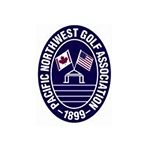Handicap Hub: Keep Calm and Net Double Bogey On
By Kelly Neely, Sr. Dir., Handicapping & Course Rating
Click Here for Handicap Hub Archives
Keep Calm and Net Double Bogey On
Happy New Year! And Happy World Handicap System to us all. It’s a brand new decade and a new era for handicapping.
Unless you’ve found yourself marooned on a remote tropical island, blissfully devoid of connection with the outside world (give me a second while I ponder this peaceful, Happy Place), there is no doubt you’ve been reading about the WHS and are curious.
From the barrage of phone calls and emails I’m getting, a few arguments are already brewing and misconceptions are being bandied about. And so it goes with the subject of handicapping – whether it’s the old USGA Handicap System or the new World Handicap System – we can always count on healthy discourse and debate (and if it turns unhealthy – which it sometimes does – please take a deep breath and visit your own Happy Place).
I’ll just come out with it: change is hard. We got used to the good ole Handicap System – quirks and all. It worked well. Along comes 2020 and boom! – we’re faced with modifications and innovations. The new Rules of Handicapping and shiny, modern technology have converged.
While that isolated desert island might sound good right about now given we’re in the middle of winter, it has no golf courses so let’s embrace the WHS enhancements in preparation for the season. Here are a couple that pair up perfectly – Net Double Bogey and Hole-by-Hole score posting.
I know. I can already hear you. “What was wrong with ESC? It was so easy to remember my max hole score was an 8.” And “I’m not going to post hole-by-hole! It’ll take too long.”
Points taken, but here come the counterpoints.
First, the way to approach Net Double Bogey is by renaming it in your brain as “Double Bogey Plus.” For all but those rare folks with plus handicaps, we are adding strokes to Double Bogey to derive our maximum hole score. The other reason why “plus” is an easier tag is that it aligns with another hole score adjustment, which we already know as “Par Plus.”
-
Note 1 – Double Bogey Plus is used as a maximum hole score as a downward adjustment when your strokes go over that number. Par Plus is used when you don’t play a hole at all (match finishing before final hole, hole out of play due to construction, etc).
- Note 2 – Plus handicap players are giving strokes back to the course, beginning at the hole ranked #18 (the 18th allocated stroke hole) and working backwards. For them, the term Net Double Bogey works better.
Do you need a degree in mathematics to do Net Double Bogey, aka Double Bogey Plus adjustments? Of course not. It’s simple. What’s different about it is that instead of using a max per round, we’re using a max per hole. We’ve got to use our noggins a bit more, that’s all. But it’s worth it!
Net Double Bogey = Par of the hole + 2 (for the double) + any handicap strokes you are allowed on the hole
Why is it worth it, you ask? Net Double Bogey is more consistent from hole to hole than the Equitable Stroke Control procedure. Let’s say your Course Handicap is 21 on a specific set of tees. With ESC, you would have the same maximum score – an 8 – on each hole regardless of the Par or difficulty. Net Double Bogey is a more personal assessment compared to being lumped into a 10-stroke handicap range on an ESC Chart.
By factoring in Par and Stroke Index (handicap holes) under the Net Double Bogey, aka Double Bogey Plus procedure, adjusted hole scores will be more precise and reflective of each player’s demonstrated ability. So, this new method of deriving a maximum hole score is a vast improvement over ESC and one that we can feel good about.
If I’ve still not convinced you, rest assured I’m not done. I’m nothing if not tenacious (read: doggedly persistent / downright annoying). Here’s where I’m going to push you toward using the little tool that Competition Committees have always known and loved – hole-by-hole score posting (why should they have all the fun anyway?).
Before you dig your heels in and balk at my suggestion with “Nobody has time for that!”, let me point out some things you may not know yet. We are currently populating the GHIN system with accurate hole Par and Stroke Index Allocation for each course / tee in the OGA region to be ready for the start of the season on March 1. These are necessary pieces of data to make this system gel perfectly. Hole-by-hole score posting will be so automated it will be – dare I say it: a no-brainer. We are already getting reports from traveling OGA members who have been using this method and they have been pleasantly surprised how easy it is.
When you choose to post your score hole-by-hole, you’ll need to first find your course. Just for fun, test this right now by searching for a course in season; for example, Torrey Pines in Southern California, and pick a set of tees. Once you click the Enter Hole-by-Hole Score button, you’ll be presented with a scorecard, all beautifully laid out with yardage, par and Stroke Index already plugged in. All you have to do is type in your gross score and watch the system make your Net Double Bogey adjustments for you. How cool is that? No icky math to do!
-
Note 3 – Hole-by-hole score posting is a strongly suggested option, not a requirement. It will be available via the GHIN mobile app, ghin.com, and the posting computer at your golf course.
- Note 4 – By flipping the switch on a little thing called Advanced Stats on the mobile app or on ghin.com, you can track Putts, Greens in Regulation (GIR) and Driving Accuracy. Another great feature!

** Image above is a hole-by-hole score posting on GHIN.com (with advanced stats). Note the adjusted score for holes 5 and 6 - that is automatically calculated when posting hole-by-hole.
Questions? Contact Kelly or Gretchen in the OGA Handicapping & Course Rating Department at (503) 981-4653 x226 or Click Here to Email Your Question








